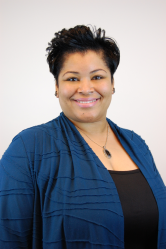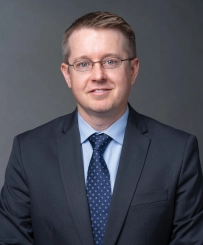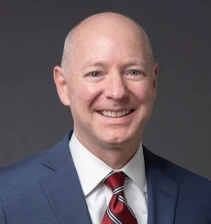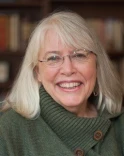
When Nina Bridgers decided to pursue her longstanding dream of a job in the tech field, she pinpointed University of Maryland Global Campus (UMGC)—the institution that U.S. News Short List ranks as No. 1 in the nation for transfer students—as the lynchpin of her plan.

Before the COVID-19 pandemic, Bridgers enrolled at Prince George’s Community College in Maryland to complete an associate degree that she sidelined to care for her sick mother years earlier. She then carried credit from that community college degree to UMGC, where she is working toward a Bachelor of Science in computer networks and cybersecurity.
Bridgers liked UMGC because of its partnership with the community college and the cascade of support offered students, including academic coaches, easy transfer of past credits, flexible online classes, and access to financial aid. Bridgers said UMGC understands the special challenges faced by students who move from one educational institution to another.
The U.S. News Short List, which teases out individual data points in hopes, the magazine says, of “providing students and parents a way to find which undergraduate or graduate programs excel…,”, reached the same conclusion.

“The U.S. News rankings reiterate what is part of our DNA, that we are the destination school for transfer students,” said Kristophyre McCall, chief transformation officer at UMGC. “We are a great and flexible place for transfer students to bring their experiences. We are open to maximizing the acceptance of their credits, whether from prior learning or on-the-job experience.
“Unlike a lot of universities, we don’t require students to re-learn knowledge they already have,” he added.
Not all U.S. universities accept transfer students. One of the biggest distinguishers for UMGC is its willingness to accept transfer credits—up to 90 credits. UMGC enrolled more than 9,500 new transfers in fall 2020. Even more, it has a 100 percent acceptance rate, compared with 65 percent for higher education as a whole. The No. 2 transfer school in the U.S. News Short List analysis is California State University, Northridge, with 6,727 new transfer students in fall 2020 and a 67 percent acceptance rate.
A 2017 report from the Government Accountability Office found that students who moved between public schools — the majority of transfer students — lost an average of 37 percent of their credits. Transfers from private for-profit schools were even more challenging. Those students lost an estimated 94 percent of their credits, stretching out their investment in time and money to get a degree.
“At UMGC we have the ability to assess and accept credits where other universities don’t,” McCall said. Beyond credits from other academic institutions, the university also accepts credits for prior learning obtained through certain workplace or military training.
McCall said UMGC’s strength is that it promotes its transfer-friendly reputation and strategically builds systems and processes that enable students to know how many of their credits will transfer, the degree programs that best match their career aspirations, and the courses they need each semester. The university also helps students navigate the complexities of financial aid and other payments options.
The UMGC website carries an online tool that assesses credits acquired in previous college studies. Students also can contact the admissions office to learn how many of their credits will transfer. They usually can have their transcript evaluated within 48 hours of submitting it.
“Our goal is to make the process as seamless as possible,” McCall said.
UMGC’s transfer-friendly reputation owes much to its expanding roster of partnerships with community colleges. The university currently has more than 100 such alliances, including one with the California Community Colleges System, which represents 116 schools. Students transferring to UMGC from partner schools are guaranteed admission and put on mapped out pathways toward their degrees.
Transfer students have become important for the future of higher education, largely because the numbers of traditional students—those who start college right out of high school—are falling in tandem with a decline in U.S. population growth.
“The population of traditional students, starting in 2024 and 2025, will decrease about 15 percent,” McCall explained. “As the market for traditional-aged college students gets tighter, universities and educational organizations are going to be focusing on adult learners, transfer students and different types of credentials that might be the focus of those students.”
There is another element that distinguishes transfer students and makes UMGC a great destination. Transfer students know how to achieve in higher education.
“As a group, transfer students … have proven to be especially successful, in large part because they already have had experience in an academic environment before they reach UMGC,” said Chris Motz, vice president for academic outreach and corporate alliances. “They understand the landscape and have experience navigating a college-level course.”

Chris Motz
That doesn’t mean the pursuit of a degree is easy. Transfer students often juggle jobs and family responsibilities while studying.
“A lot of transfer students haven’t been to school for quite some time, so it is about building a support mechanism around them to get them comfortable being back in the classroom. It’s about getting students on track or keeping them on track for graduation,” Motz said. “We have a student-success coach model that wraps all our services and helps our students be successful.”
Bridgers said she enrolled at UMGC because it works hard “to ensure students don’t feel lost coming into a new environment.” The university accepted almost all her community college credits as well as 10 credits from other studies. That gave her a strong jumpstart on her bachelor’s degree.
“What I like about UMGC is that they invest … in their students’ lives,” Bridgers said. “For instance, when I was first admitted to the university, I was set up immediately with a career coach and adviser. They checked in with me weekly, sometimes daily.
“They wanted to discuss my options. They wanted to make sure I felt confident about the degree program. They were always on point to say, ‘You’re a good fit for this. You look like you’re heading on a good path,’” she continued. “They anticipated my questions and needs, and they thought out a calculated approach to apply to me as a transfer student.”
She said they also provided information that secured a scholarship for her and they connected her with UMGC resources that would help her academic journey. The university’s use of open resource educational materials for courses, rather than expensive textbooks, saved her money.
“I’m a working professional with little time to explore every strategic angle. UMGC takes the hard work, the guesswork, out of it. They put me on a direct path, and my studies are going great,” Bridgers said.
Bridgers has worked for the D.C. government in an administrative job since 2008. With a tech degree under her belt, she will look for a position as a government systems administrator or systems engineer.
Career changers and students returning to higher education after an interruption make up a significant part of UMGC’s enrollment. But there are many other reasons why students transfer schools. They may be unhappy with their college experience and seek a better fit. They may be changing majors and want a school with a more prominent degree program. Rising tuitions or fees may push them toward more affordable educational institutions.
Many UMGC transfer students also come from the U.S. military, the original population that the university was created to serve 75 years ago.
Vice President for Academic Quality Christopher Davis said it was satisfying to be spotlighted by U.S. News & World Report, but the university is not resting on its laurels.

Christopher Davis
“The recognition shows we’re doing a good job, but there’s so much more that we can do to create an even better experience for the students,” he said. “One thing we’re working at is increasing the number of agreements we have, whether with other universities or academic institutions.”
Davis said more credit for on-the-job training, including for military students, also fits into UMGC’s strategy for helping students complete their degrees in the shortest time possible. He noted that the Bachelor of General Studies program has proven a useful path for students who have lots of elective credits they want to transfer.
“It’s all about asking how we can maximize using students’ credits toward a degree,” he said.
Davis, who also teaches, underscored UMGC’s agility in helping nontraditional students meet their career goals.
“I had a student at UMGC who was 60. She worked in digital forensics for a government contractor, and she wanted to get hired by the government—but she needed a bachelor’s degree,” Davis said. “She already had expertise but she needed that degree. There was a real economic incentive and a career advantage.”
Unlike more traditional universities, Davis noted, UMGC is focused on workforce opportunities. “It’s core to our mission to be career-oriented,” he explained.
He also noted that UMGC works hard to ensure students are the right fit.
“We talk to students about their purpose and goals, their motivation and their values, and we connect all those things,” Davis said. “If a student doesn’t know those, it’s too expensive in time and money for them to be here. The consequences if they don’t finish their degree are more significant.”
Bridgers is looking forward to completing her bachelor’s program at the end of 2023—some 25 years after she left high school. At that time, both Bridgers, who was at a community college, and her sister, who was enrolled at UMGC, had to leave their studies to care for their mother. By the time their mother recovered, Bridgers was entrenched in a full-time job.
Bridgers powered through her studies during COVID-19 lockdowns while continuing to work 40 hours a week. She even squeezed out time to keep up her freelance business, iHeart Jesus Creative Designs, focusing on illustrations, logos, publications, and graphic design.
As she works on her bachelor’s degree, she’s added a new goal: to obtain a master’s degree. “I would like to pursue that so I can one day become an adjunct professor,” she said.

Share This